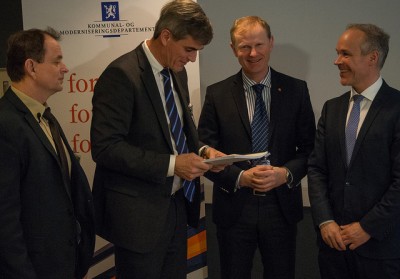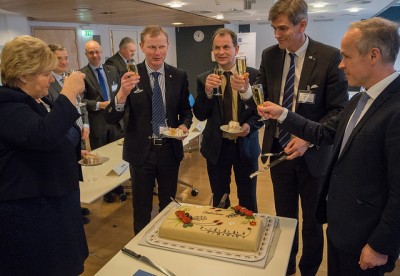No matter who wins Monday’s mid-term local government elections, state efforts will continue to get more of Norway’s 428 municipalities to merge. Government ministers in the country’s Conservatives-led coalition are pushing hard for so-called kommunereform (municipal reform), claiming its mergers would provide economies of scale, less bureaucracy and better delivery of public services.

It’s up to the various municipalites themselves, however, to propose, negotiate and eventually agree or disagree to join forces. The state government has claimed no one will be forced to merge, although some politicians and lobby groups think several should.
Among them is national employers’ organization NHO, which wants to see Norway cut its number of municipalities from the current 428 to just 77. That’s completely “out of touch with reality,” counters the rural-oriented Center Party, while an expert commission claims that all of Norway’s municipalities should have at least 15,000 to 20,000 inhabitants. Any local government representing fewer should merge with their neighbours, according to the commission that delivered its report on the issue to the state government last year.
The process for such mergers is never easy. The local elected officials leading negotiations all have vested interests, not least their own jobs. A merger of small four townships, for example, means at least three mayors and three administrative leaders would lose their positions of authority, as would many other civil servants.

Municipal reform, fronted first and foremost by the state government minister in charge of municipalities and administration, Jan Tore Sanner of the Conservatives, has been a campaign issue during recent weeks. Few communities have resolved it, though, and some may opt to hold a referendum to allow voters to decide whether they should merge with neighbouring communities. In Østfold County south of Oslo, the municipalites of Moss, Rygge, Våler and Råde have opted for a survey of residents who collectively would number 60,000 if the four join forces.
There are no guarantees such surveys or referenda will help, because residents themselves are split. Many want to retain local authorities and the smallness of the current system, and they don’t want to have to travel far to seek or arrange the many services local governments provide in Norway, from nursing home admissions to schools, day care centers or help at home.
Debate over the carrot and the stick
Sanner and his state government colleagues are offering economic incentives for those municipalities that do join forces. He’s backed by a majority in Parliament that’s encouraging municipal reform and asked all of Norway’s so-called kommuner in the fall of last year to “have a chat” with their neighbours about merging. Those agreeing to merge by June of next year will receive additional state funding and other forms of assistance as a reward.
It’s all supposed to be voluntary, but a majority in Parliament also opened up for exceptions. If, for example, three of four municipalities that have been negotiating a merger agree, but the fourth says “no,” it could be prodded into going along out of “regional consideration.” Labour, which leads the opposition in Parliament, disagrees with such prodding or force, though, as does the Center Party. Labour leader Jonas Gahr Støre has claimed Labour “isn’t against changes in local community structure,” telling newspaper Dagens Næringsliv (DN) recently that Labour’s local politicians are “therefore taking part in merger discussions all over the country.” He insists, though, that “such changes happen best” when they’re voluntary and have local support.
Retaining a voice
Many communities just want to retain their own voice and way of running their small slices of Norway’s social welfare state, like the island of Røst up north, not far from Lofoten. It only has around 560 residents but functions as its own community, responsible for providing those living on the island the same welfare services Norwegian get elsewhere for their tax money. Røst’s mayor, Tor Arne Andreassen, has been faced with the proposition of becoming part of Bodø Kommune on the mainland, the largest city in the vicinity, with Bodø welcoming the island’s 560 residents.
Andreassen of the Labour Party admits that Røst can’t deliver all the services Bodø can but also notes that it takes half-a-day to get to Bodø by boat and airfares are expensive. He told newspaper Aftenposten he’d therefore put off further negotiations in favour of allowing decisions to be made on the island: “It’s 110 kilometers over the sea to Bodø. It’s a bit difficult to call them in the morning and say, ‘it’s snowing here, someone needs to get out the plows.'”
Sanner will doggedly continue to urge mergers in advance of next June, while Støre wants the deadline for incentives extended. Monday’s elections may change the players in some communities, and thus those doing the negotiating, but few are expecting any major changes in the process. The government, Sanner has said, wants to move “power and responsibility” to bigger and “more robust” municipalities, to maintain welfare levels without jeopardizing local democracy. While he claims his ministry is “on target” with its reform efforts, he faces challenges over how to deal with communities like Røst, without use of force.
newsinenglish.no/Nina Berglund

